38 reading fat on nutrition labels
How to Read Nutrition Labels | Cooking Light The footnote now reads, "The % Daily Value (DV) tells you how much a nutrient in a serving of food contributes to a daily diet. 2,000 calories a day is used for general nutrition advice.". By utilizing the Percent Daily Value feature, you can see if a source can be considered a good, bad, or even excellent source of particular nutrients ... PDF Reading Nutrition Labels - Xavier University Experts agree we should limit saturated fats and avoid trans fats. More nutritious sources of fat include olive oil, avocado, fatty fish, and nuts. Fat also contributes to making food more satisfying. Protein helps with building and repairing tissue; it's found in every cell. The body also uses extra protein as an energy source.
Understanding Food Nutrition Labels | American Heart Association When the Nutrition Facts label says a food contains "0 g" of trans fat, but includes "partially hydrogenated oil" in the ingredient list, it means the food contains some trans fat, but less than 0.5 grams per serving. So, if you eat more than one serving, you could end up eating too much trans fat.

Reading fat on nutrition labels
How to Read a Nutrition Facts Label - Everyday Health For trans fats, nutrition labels are tricky. "The nutrition facts label can have 0 g listed next to trans fat, as long as the product has less than 0.5 g of trans fat per serving," says Goergen.... How to Read Nutrition Facts Label - Food Network If you're eating 1600 calories, that equals about 17 grams of saturated fat per day. If you want to go with the American Heart Association's recommendations, that number will be 8.8 grams for the... Reading Food Labels - aahs.org Reading food labels is key to choosing the right foods. Here are a few tips to keep in mind: Low-calorie foods have less than 40 calories per serving. Low-fat foods have less than 3 grams of fat per serving. (Read more about finding low-fat foods.) Low-cholesterol foods have less than 20 mg of cholesterol and 2 grams or less of saturated fat ...
Reading fat on nutrition labels. How To Read Food and Beverage Labels - National Institute on Aging Most older adults exceed the recommended limits for saturated fats, sodium, and added sugars. Compare and choose foods to get less than 100% DV of these each day, making sure to adjust for how many calories are in your diet. Additionally, many older adults do not get the recommended amounts of dietary fiber, vitamin D, calcium, and potassium. › medialibraries › urmcmediaA Guide to Reading Food Labels - University of Rochester Feb 27, 2013 · of calories from fat. You should limit the number of calories from fat to 20-35% of your total daily calories. In the sample label, there are 250 calories in one serving and 110 calories from fat. This means almost 50% of the calories in a single serving of this food come from fat. Due to its high fat content, this food is not a healthy choice. How To Read A Food Nutrition Label | Gobble For example, the USDA recommends that most people get 1,000 mg of calcium per day. So, if a serving of food contains 100 mg of calcium, this means the serving contains 10% Daily Value of calcium. The same applies to items on the food label you may want to avoid, like fat and cholesterol. For example, 15 grams is 20% Daily Value for total fat. PDF TO CARE 4 YOURSELF READING A NUTRITION FACTS LABEL - novoMEDLINK You can read the Nutrition Facts labels to compare calorie counts of similar foods to find the lowest-calorie option. Total fat This line tells you how much fat is in a serving of this food. It includes fats that are good for you, such as mono- and polyunsaturated fats.
Food Labels: Fat & Cholesterol | Home & Garden Information Center The Nutrition Facts label shows you how much fat is in a product, even if the fat is hidden as an ingredient. The serving size and the nutrients listed on this label are consistent, which makes it easy to compare similar products without any calculations. % Daily Values (% DVs) are listed in a column on the "Nutrition Facts" label. 3 Ways to Read Nutrition Facts on Food Labels - wikiHow Keep your fat intake under 100% of the recommended value. 65% is a healthy number to shoot for, but you may want to consume a little more if you're low on energy or trying to build muscle mass. Saturated fat should account for less than 7% of your daily caloric intake. [18] Butter, oils, pastries, and red meat tends to be high in saturated fat. › reading-food-labelsReading Food Labels | ADA - American Diabetes Association It’s time to decode those food claims. Trying to figure out nutritional information on labels and packaging isn’t easy. The good news is that we can help. Untangle packaging claims. If you get tripped up on food content claims, you’re not alone. Fat free vs. low fat vs. reduced fat. Low ... How to Read Nutrition Labels - Frederick Health Limit saturated fat, trans fat, sodium, and added sugars. They only increase your risk of heart disease, high blood pressure, cancer, and more. Instead, eat more dietary fiber, vitamin D, calcium, iron, potassium, protein, and select carbohydrates like whole-grain breads, rice, and vegetables.
How to Read Nutrition Labels: Fat Content, Carbs & What To Look For Nutrition labels are required to include total fat, saturated fat, and trans fat. The total amount of fat in the diet is a percentage of your calorie needs. The recommendation for the typical American diet is around 30%. For someone taking in 2,000 calories, this would mean around 70 grams of total fat per day. PDF How Do I Understand the "Nutrition Facts" Label? Nutrition Facts label and ingredient list. When you go grocery shopping, take time to read the Nutrition Facts labels on the foods you purchase. Compare the nutrients and calories in one food to those in another. The information may surprise you. Make sure you aren't buying foods high in calories, saturated fat, trans fat, sodium and added ... Key Points when Reading Nutrition Labels - Mayo Clinic Connect We want to aim for less than 5 grams of saturated fat per serving, and 0 grams of trans fat. Sodium. We often encourage no more than 600 mg sodium per meal, or less than 200-300 mg sodium per serving. Carbohydrate. Consider looking at Total Carbohydrate first and foremost. The rest of the breakdown can inform you of nutritional value ... How to Read the Nutrition Facts Label on Packaged Foods Sodium. Many people get far too much salt, or sodium. Most of it is in packaged foods and restaurant items. Limit salt to 2,300 milligrams (about 1 teaspoon) daily. If you have high blood pressure ...
How to Read a Nutrition Facts Label - The Family Meal Project The nutrition terms on the label are there to tell you more about some of the nutrients in the food item you are looking at. Calorie Free - less than 5 calories per serving. Low Calorie - 40 calories or less per serving. Fat Free/Sugar Free - less than 1/2 gram of fat or sugar per serving. Low Fat - 3 grams or less of fat per serving.

Knowledge, Attitudes and Understanding of Low-fat Nutrition Labels/Claims among University Students
Reading Nutrition Facts Labels - University of Arizona You should limit sugar consumption. Get enough Fiber, Unsaturated Fat, Vitamin A, Vitamin C, Calcium and Iron in your diet. Vitamins A and C, Calcium and Iron aren't given by weight (in grams) but by % daily value. So for this product, in one serving, it contains 20% of the daily-recommended amount of Calcium and 2% of the daily-recommended ...
Quick Tips for Reading the Nutrition Facts Label To create your Tip Card: 1. Use a pair of scissors to cut along the dotted lines. 2. Fold along the center line. 3. Keep the Tip Card in your wallet or purse. Calories230 Amount per serving Serving...
How to read nutrition labels | safefood Some labels use colour coding to show at a glance if a food is high, medium or low in fat, saturated fat, sugar and salt. Low (green) - the best choice. Medium (amber) - okay most of the time. High (red) - only choose occasionally. If the label isn't colour coded, use our label decoder as a guide.
› food › nutritionThe Basics of the Nutrition Facts Label - Eatright.org Step 4: Check Out the Nutrition Terms. Low calorie: 40 calories or less per serving. Low cholesterol: 20 milligrams or less and 2 grams or less of saturated fat per serving. Reduced: At least 25% less of the specified nutrient or calories than the usual product. Good source of: Provides at least 10 to 19% of the Daily Value of a particular ...
How To Read Nutrition Labels Low amount equals 5% DV, or less of a nutrient per serving High amount equals 20% DV, or more of a nutrient per serving Generally, it's best to select foods that are higher in %DV for dietary fiber, vitamin D, calcium, iron, and potassium and select foods that are also lower in %DV for saturated fat, sodium and added sugars.
Fat Content on Food Labels - Reading Between the Lines The Mayo Foundation continued, "Still, you may be able to tell if a product contains trans fat, even if it's not directly listed on the food label. Look for the words ' hydrogenated ' or 'partially hydrogenated' in the list of ingredients. These terms indicate that the product contains trans fat.
Interpreting Total Fat and Types of Fat on Food Labels - Nina Cherie ... Now, at the end of the day, since all high-fat foods tend to drive up calorie counts, it's typically recommended that you limit your intake of total fat to 25-35% of your daily calories. Of this amount, saturated fats and trans fats should comprise less than 7-10% and no more than 1%, respectively.
Reading and Understanding Food Labels and Nutrition Info - Beaumont Health A one-percent reduction of saturated fat in your diet reduces your heart disease risk by three percent. Keep saturated fat to less then 15 grams per day. It is not required to list unsaturated fats (polyunsaturated and monounsaturated) on food labels. In general, unsaturated fats lower cholesterol. The healthiest unsaturated fat is canola oil.
› en › healthy-livingUnderstanding Ingredients on Food Labels | American Heart ... The Nutrition Facts information is always displayed in the same orderly fashion and helps you understand how much of certain nutrients that you need to limit are contained in the product per serving. What isn’t always so clear is the ingredients listed on foods or drinks.
kidshealth.org › en › teensFood Labels (for Teens) - Nemours KidsHealth The information on food labels is based on an average adult diet of 2,000 calories per day. The actual number of calories and nutrients that kids need will depend on their age, weight, gender, and level of physical activity. (For more guidance, check out the USDA's MyPlate.) Fat. Total fat shows how much fat is in a single serving of food.
This Is How to Read a Nutrition Facts Label on the Keto Diet That's not a 33% fat, 33% carb, 33% protein ratio. It's actually 52% fat, 24% carb, 24% protein. This may sound a little confusing, but as long as you limit carbs (the most important part) and aim for healthy fats and protein to make up a majority of your daily macronutrient intake, your results should be excellent.
› health › type-2-diabetesReading a Nutrition Label When You Have Diabetes and Kidney ... Jun 10, 2022 · Nutrition labels tell you which nutrients are in the foods you eat and in what amounts. Reading and understanding nutrition labels can help you better navigate food shopping, meal planning, and ...
› food › new-nutrition-facts-labelHow to Understand and Use the Nutrition Facts Label | FDA Nutrients to get less of: Saturated Fat, Sodium, and Added Sugars. Saturated fat, sodium, and added sugars are nutrients listed on the label that may be associated with adverse health effects - and...
Reading Food Labels - aahs.org Reading food labels is key to choosing the right foods. Here are a few tips to keep in mind: Low-calorie foods have less than 40 calories per serving. Low-fat foods have less than 3 grams of fat per serving. (Read more about finding low-fat foods.) Low-cholesterol foods have less than 20 mg of cholesterol and 2 grams or less of saturated fat ...
How to Read Nutrition Facts Label - Food Network If you're eating 1600 calories, that equals about 17 grams of saturated fat per day. If you want to go with the American Heart Association's recommendations, that number will be 8.8 grams for the...
How to Read a Nutrition Facts Label - Everyday Health For trans fats, nutrition labels are tricky. "The nutrition facts label can have 0 g listed next to trans fat, as long as the product has less than 0.5 g of trans fat per serving," says Goergen....


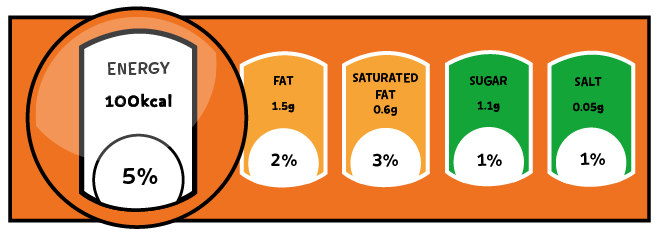
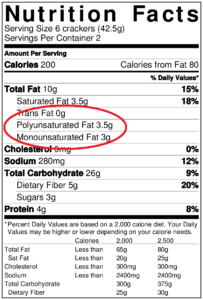
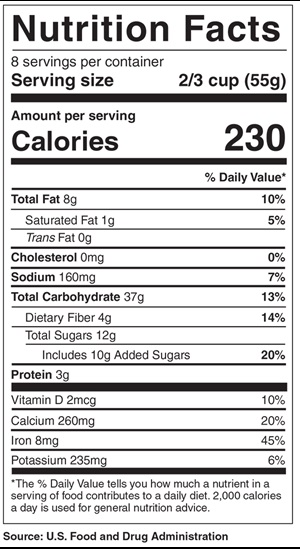
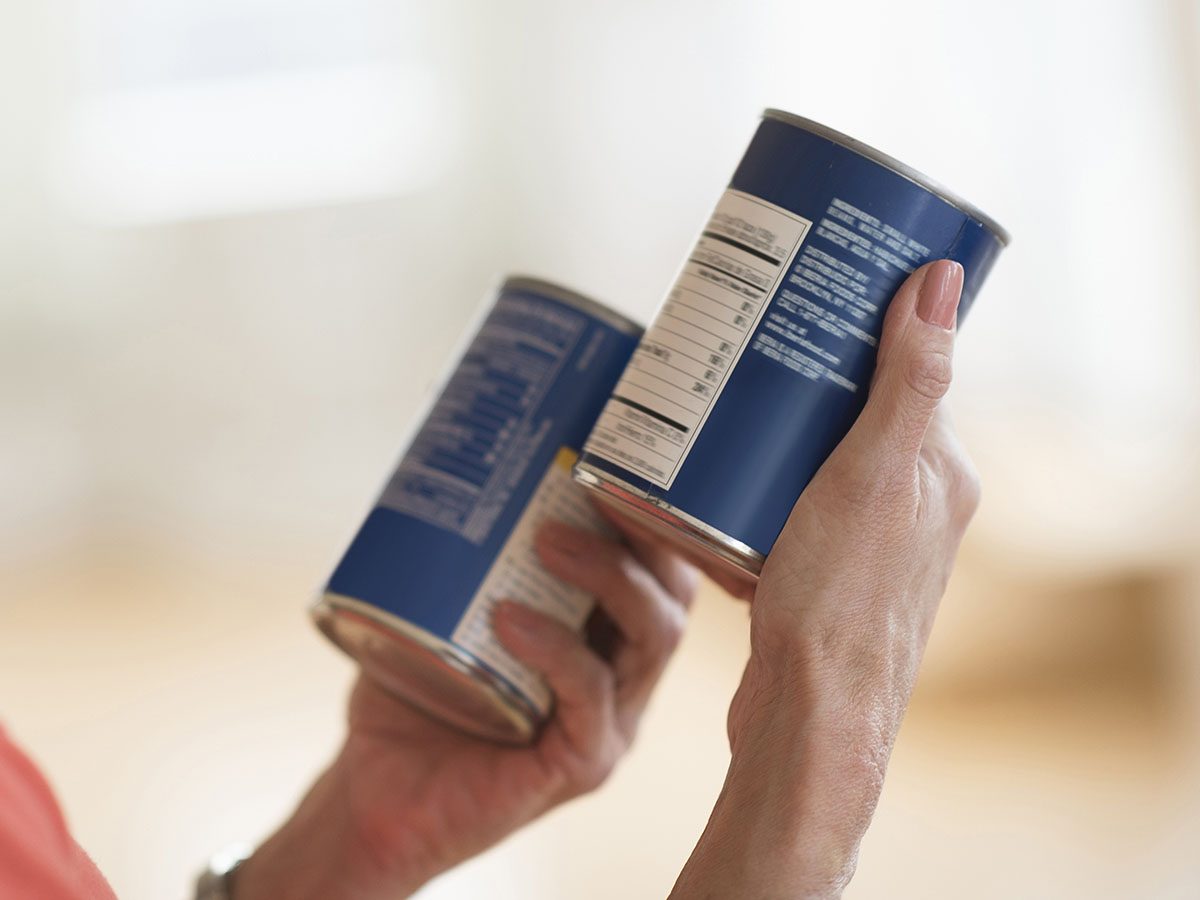
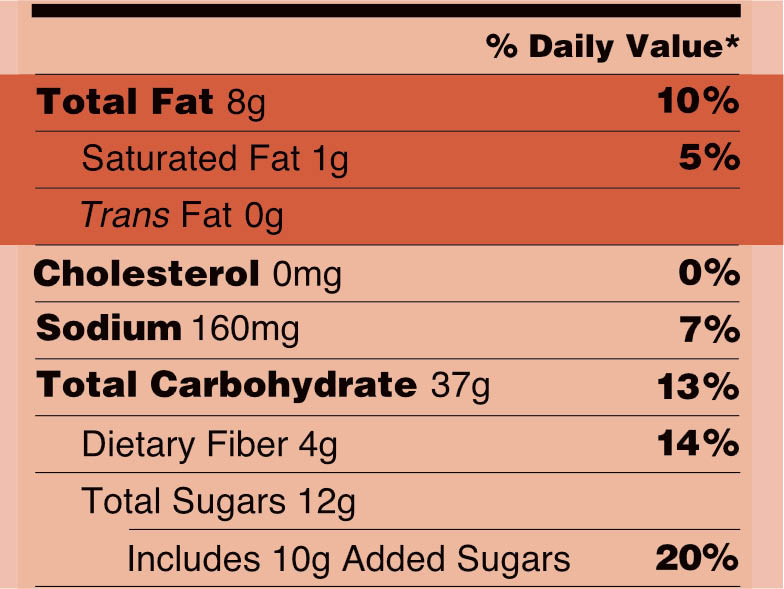


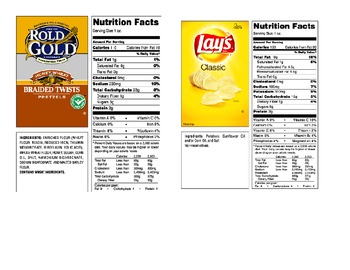
Post a Comment for "38 reading fat on nutrition labels"